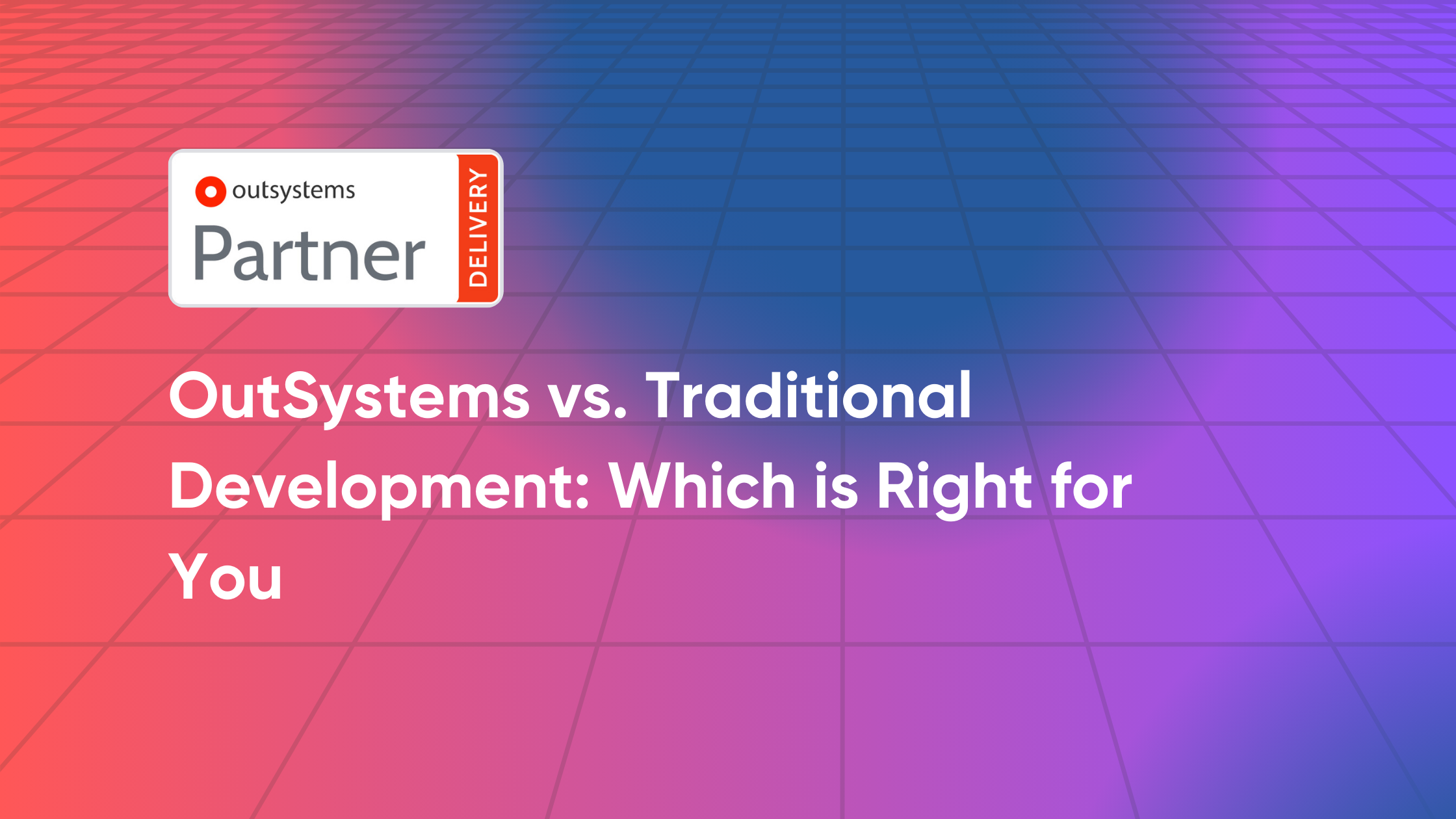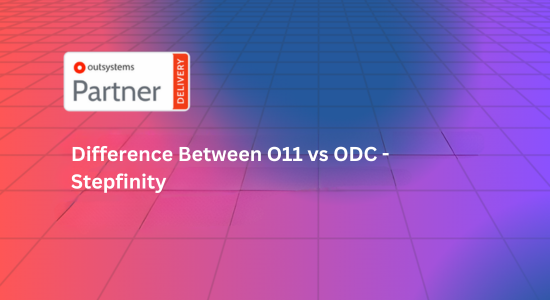How OutSystems Accelerates Digital Transformation: A Comprehensive Guide
In the age of rapid technological advancements, digital transformation has become essential for businesses seeking to stay competitive. This transformation is not just about adopting new technologies; it involves fundamentally changing how organizations operate, deliver value, and engage with customers. However, traditional methods of software development can be slow, resource-intensive, and often unable to keep pace with the speed of change required. OutSystems, a leading low-code development platform, addresses these challenges head-on by enabling faster, more efficient, and scalable application development. This comprehensive guide will explore how OutSystems accelerates digital transformation and the benefits it offers to businesses.
Understanding OutSystems: A Low-Code Platform
OutSystems is a low-code platform designed to simplify and speed up the application development process. By abstracting much of the complexity involved in coding, OutSystems allows developers to focus on delivering business solutions rather than getting bogged down by technical details. The platform is equipped to handle everything from simple mobile apps to complex enterprise systems, making it versatile enough to meet a wide range of business needs.
Key Features of OutSystems
- Visual Development Environment
OutSystems provides a drag-and-drop interface that enables developers to build applications visually. This environment is not only intuitive but also allows for rapid prototyping and iteration, significantly reducing the time it takes to develop applications. - Full-Stack Capabilities
The platform supports full-stack development, allowing developers to build both front-end user interfaces and back-end services within a unified environment. This ensures consistency across the application and streamlines the development process. - Pre-Built Templates and Components
OutSystems comes with a library of pre-built templates, components, and connectors that can be easily integrated into applications. These resources accelerate development and help maintain high-quality standards across projects. - AI-Powered Assistance
OutSystems leverages artificial intelligence to provide real-time recommendations, automate repetitive tasks, and optimize application performance. This AI-driven approach helps developers work more efficiently and reduces the likelihood of errors. - Seamless Integration
OutSystems offers robust integration capabilities, allowing businesses to connect their applications with existing systems, databases, and third-party services. This ensures that new applications can be seamlessly integrated into the existing IT landscape. - Scalability and Flexibility
Whether deployed in the cloud, on-premises, or in a hybrid environment, OutSystems ensures that applications are scalable and can handle varying levels of demand. The platform’s architecture is flexible, enabling businesses to adapt to changing requirements without extensive rework. - Built-in DevOps
OutSystems includes built-in DevOps tools for continuous integration and continuous delivery (CI/CD), automated testing, and one-click deployment. These features streamline the development lifecycle and help maintain high levels of application quality.
How OutSystems Accelerates Digital Transformation
OutSystems plays a pivotal role in accelerating digital transformation by addressing several key challenges that businesses face in their transformation journeys. Here’s how:
1. Rapid Development and Deployment
Traditional software development can be time-consuming, often taking months or even years to bring an application from concept to launch. OutSystems significantly reduces this timeline by providing tools that allow for rapid development and deployment. The platform’s visual development environment, pre-built templates, and AI-powered assistance enable developers to create applications in a fraction of the time it would take with traditional coding methods. This speed to market is crucial for businesses looking to stay competitive in fast-moving industries.
2. Enhanced Collaboration Between IT and Business Teams
One of the biggest hurdles in digital transformation is ensuring that IT and business teams are aligned. OutSystems bridges this gap by providing a platform that both technical and non-technical stakeholders can use. The visual development environment allows business users to contribute to the development process, ensuring that the final product aligns with business goals. This collaboration leads to more effective solutions that meet the needs of the organization and its customers.
3. Agility in Responding to Market Changes
In today’s dynamic business environment, the ability to quickly adapt to changing market conditions is critical. OutSystems enables this agility by allowing organizations to iterate and improve their applications rapidly. Whether it’s adding new features, updating existing ones, or scaling the application to handle increased traffic, OutSystems makes it easy to implement changes without significant downtime or disruption. This agility allows businesses to respond quickly to new opportunities and challenges.
4. Cost-Effective Development
Developing and maintaining software can be expensive, particularly when using traditional methods. OutSystems helps reduce costs by streamlining the development process and minimizing the need for extensive manual coding. The platform’s built-in tools for automation, testing, and deployment further reduce operational costs, allowing businesses to allocate resources more efficiently. Additionally, by reducing the time to market, OutSystems helps organizations achieve a faster return on investment (ROI).
5. Driving Innovation
Innovation is at the heart of digital transformation, and OutSystems provides the tools needed to drive it. The platform’s flexibility and integration capabilities allow organizations to experiment with emerging technologies like artificial intelligence, machine learning, and the Internet of Things (IoT). By enabling rapid prototyping and iteration, OutSystems allows businesses to explore new ideas and bring innovative solutions to market faster. This ability to innovate quickly and effectively is a key driver of competitive advantage.
6. Scalability for Growth
As businesses grow and evolve, their digital solutions must be able to scale accordingly. OutSystems is built to support this scalability, ensuring that applications can handle increased demand without requiring significant rework. The platform’s architecture allows businesses to scale their applications vertically (adding more resources to handle increased load) or horizontally (adding more instances of the application) as needed. This scalability is essential for businesses looking to expand their operations or enter new markets.
7. Ensuring Security and Compliance
Security is a critical concern in any digital transformation initiative. OutSystems addresses this concern by providing robust security features, including role-based access controls, data encryption, and automated security testing. The platform also helps organizations meet compliance requirements by providing tools for managing governance and regulatory standards. These features ensure that applications built on OutSystems are not only innovative but also secure and compliant with industry regulations.
Real-World Examples of OutSystems in Action
OutSystems has been successfully used by organizations across various industries to accelerate their digital transformation efforts. Here are a few examples:
- Liberty Seguros: This insurance company used OutSystems to develop a customer-facing portal that streamlined operations and enhanced the user experience. By reducing the time it took to issue policies by 60%, Liberty Seguros was able to improve customer satisfaction and operational efficiency.
- Vodafone: The telecommunications company leveraged OutSystems to create a suite of mobile applications that improved customer engagement and streamlined internal processes. The result was a 70% reduction in development time and a significant improvement in customer service.
- Ricoh: A global technology company, Ricoh used OutSystems to modernize its IT systems and deploy business-critical applications more quickly. This allowed Ricoh to respond faster to market demands and improve overall operational agility.
These examples illustrate the transformative impact that OutSystems can have on businesses, enabling them to innovate, scale, and stay competitive in a rapidly changing digital landscape.
Conclusion
Digital transformation is no longer a choice but a necessity for businesses looking to thrive in the modern world. However, the journey to transformation can be fraught with challenges, from lengthy development times to difficulties in aligning IT and business goals. OutSystems offers a powerful solution to these challenges by providing a low-code platform that accelerates application development, fosters collaboration, and drives innovation.








